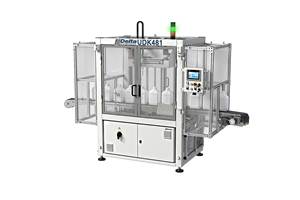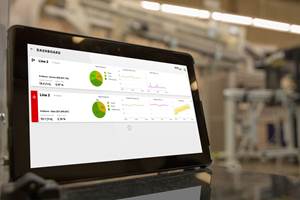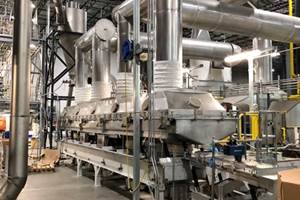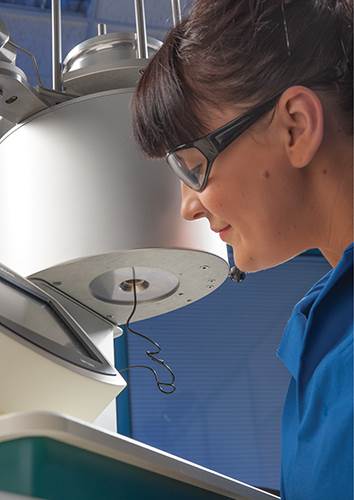How to Get Better MFI Test Results
It's the most common materials-property test performed by processors and resin suppliers alike, but it is susceptible to multiple sources of error.
A variety of factors affects the precision and accuracy of a melt flow rate (MFR) test, the one materials property test most commonly performed by molders, extruders, compounders, and resin suppliers alike. It is quite common for two organizations to test the very same material and come up with different test results, setting off a search to determine the cause of the difference. For that reason, it is best to consider the following questions at both sources:
•Is the melt indexer in good working order?
•Has the machine been calibrated by a certified metrologist, checking temperature, physical dimensions, and distance and time measurement accuracy?
•Is the machine clean?
•Are the operators properly trained and using the same testing technique?
A CLOSE LOOK AT THE STANDARDS
The chances of obtaining precise and accurate test results can be greatly increased by closely following proper testing procedures and requirements, by machine verification, and by periodic testing of control materials or standard reference materials. Even then, variable or “bad” MFR results, attributable to the equipment and/or procedure, still can be encountered. Examination of the actual industry standard offers some direction here.
The two major MFI test standards are ASTM D1238 “Standard Test Method for Melt Flow Rates of Thermoplastics by Extrusion Plastometer,” and ISO 1133 “Determination of the melt mass-flow rate (MFR) and melt volume-flow rate (MVR) of thermoplastics.” ASTM D1238 offers a “troubleshooting guide” in its appendix and the steps to consider below are based on it. (Consult ISO 1133 for appropriate dimensions and procedures when testing to that standard).
Both standards measure the same property, but due to slight procedural and equipment differences, they can yield different results. Both standards offer a manual means (Procedure A or Method A) of determining melt-flow values, and both also offer an automatic timed flow measurement (Procedure B or Method B). In theory, both methods, if properly performed, will yield identical test results.
There is no real consensus as to which method is best for a particular organization, but there are some guidelines. Procedure A is typically most useful for organizations that test infrequently, use a wide range of materials, use different additives in their materials, or use regrind/recycled material. Procedure B requires a “melt-density” value and is therefore best for organizations that test the same material repeatedly and want to minimize the chance of operator error. Some organizations may find that the alternative “melt volume flow rate” (MVR) procedure offered by both standards is more valuable.
STANDARD REFERENCE MATERIALS
Some labs use a standard reference material (SRM) to cross-check MFR results. There is a limited supply of select materials available from national metrological standards bureaus such as the National Institute of Standards (NIST) in the U.S., but these materials tend to be expensive and apply only to verification of MFI results for that particular material. SRM also raises the question and concern: Are you using a material to test the machine or the machine to test the material? As an alternative, some labs maintain their own supply of reference materials used to maintain in-house quality-control programs.
Other labs choose to participate in Proficiency Testing Programs (PTP). Participation is voluntary and the programs charge a fee, but they provide a benchmark to compare how your testing practices stand vs. other participants. ASTM runs one of these programs.Collaborative Testing Service is another vendor offering PTP services, and there may be other similar programs available.
Practices like these are useful in that they can highlight when something is wrong, but unfortunately they don’t identify specifically what is wrong. The range of factors that can contribute to questionable MFR test results is wide and deep, so by being aware of each factor, adhering closely to test procedures, maintaining your equipment, and following overall good testing practices, you can improve accuracy and prevent small problems from growing into larger ones.
CHECK YOUR EQUIPMENT
To ensure good test results, it is important that the testing machine and auxiliary equipment such as scales and micrometers are verified using equipment traceable to national metrological standards. The verification procedure for a melt index tester will check the dimensions of the machine, as well as the temperature control and distance measuring devices installed in the machine, for conformance to the relevant test standard.
The frequency of verification is determined by an organization’s quality-control program. Annual calibration is common practice within the industry, but regular inspection must be made of the critical components of the test instrument, particularly of consumable items such as dies, piston rods, and piston feet. These should be replaced as necessary.
Also, it is best to locate the machine in an area free from vibration and excessive air currents and to visually inspect all components of the testing machine prior to running any tests. All dimensional checks must be made when the machine is “cold”—at ambient temperature. Also the instrument’s furnace, which contains a heated metal cylinder with a precision-defined bore, should be leveled using equipment typically supplied by the equipment manufacturer.
Cleaning the components of the test machine must be done after every test. No residue from prior tests should remain on the surface of the metal parts directly involved in the test. The finish of the barrel should be mirror-like and free of rust, scratches, and imperfections. The barrel is cleaned by repeated swabbing with a cotton cleaning patch using tools normally provided by the equipment maker. Some residues are a little more difficult to clean off and may require use of a brass brush. Solvents are usually not necessary nor recommended. After cleaning the barrel, a clean die should fall to the bottom of the barrel and make an audible “click.”
The outer surface of the die is cleaned with a cotton cloth and the bore of the die is cleaned using a drill and/or a brush. The diameter of the bore, defined in ASTM D1238 as 2.0904 to 2.1006 mm (0.0823 to 0.0827 in.), should be checked periodically with a go/no-go gauge. The die should be visually inspected to make sure that the entrance of the bore is not chipped or rounded. If the die fails the go/no-go check or is damaged, discard it and replace it with a new, conforming die.
The piston rod is usually cleaned with a cotton cloth but a brass brush may be required for some material residues. The piston guide, if present, should slide freely on the piston rod. Verify periodically that the piston is straight and that the leading edge of the piston foot is sharp and free of burrs or damage that would cause it to rub against the wall of the barrel. Also, measure the foot diameter with a micrometer—it should be 9.4676 to 9.4818 mm (0.3727 to 0.3733 in.).
USE PROPER PROCEDURES
Precision and accuracy can likewise be affected by procedural factors. Test conditions for temperature and load vary by material and some materials have multiple test conditions. It is important that comparative tests are performed using the same test conditions. Resin suppliers generally post the test conditions used along with reported values, but test conditions for most materials can be found in Appendix 4 of ASTM D1238.
Moisture content can be a large variable for some materials (e.g., ABS, PMMA, PET, and nylon). These resins must be dried in a suitable oven under controlled conditions prior to testing. Some materials require drying under a nitrogen purge.
Variations in sample mass and sample charging technique can affect test results of some materials. Use of a tool to pack material into the bore during the charging process is common practice, but it can result in variations in test results for some materials if multiple machine operators are involved in the testing process. The amount of force used to pack the material often varies with operators. Similarly, the common practice of purging excess material from the bore to move the piston closer to the starting point of the test can be a source of variation in the test procedure.
A properly performed test begins when the bottom of the piston foot is 46 ±2 mm from the top of the die. The piston foot is required to reach that point within 420 ±30 sec after the material charging has been completed. A preheat time is required to remove trapped air, ensure the material is sufficiently and evenly melted, and stabilize the temperature of the material in the bore to within ±0.2° C of the setpoint prior to the start of the test. A preferable alternative to packing the material or purging it is to use trial and error to determine the optimum amount of material to be charged in the bore, based on the expected flow rate, which will result in the test starting at the proper time. It is common to weigh the material prior to charging or use a volume reference when charging the bore.
Keeping enough material in the bore can be challenging for materials with higher flow rates. To meet the preheat and start test requirements, it may be necessary to remove the test load from the piston or stop its travel during the preheat period. In some cases, the orifice needs to be plugged to stop the material from running out prior to the start of the test. Care must be used when dealing with high-flow materials to avoid burns.
Extrudate cutting technique can be a factor in Procedure A tests. Proper cutting technique is an acquired skill and requires practice to get it right, such as where to cut the extruded material as it extrudes from the die at precise intervals. Automatic cutters can be useful but may not work with all materials. Procedure A can be used with materials that have flow rates up to 50 g/10 min. However, it should be noted that the chances for error with manual cutting increases with higher melt-flow values. It is also important to note that the first cut (starting at 46 ±2mm) is considered to be the reportable test result. The practice of making successive cuts and averaging them together should be avoided.
For Procedure B tests according to ASTM D1238, permissible piston travel distances are 6.35 mm (0.25 in.) to 25.4 mm (1 in.). The operator selects the distance based on expected flow rate. The 0.25-in. travel is used for low-flow materials, while the 1-in. travel is used for high-flow materials.
As with Procedure A, the first measurement of a Procedure B test is considered to be the reportable test result. However, many modern testing instruments are equipped with an encoder-based measuring device that will allow the user to divide up the specified travel distance into discrete “captures” and then average the captures to get the reportable test result. This practice is acceptable as long as the specified distances are used.
Procedure B requires the use of a melt-density value, which is the density of the material in its molten state. The melt density is a multiplier that converts volume back into a mass value. ASTM D1238, Table 3 lists generic melt-density factors for virgin PP and PE. These factors will change with additives and processing, so it is more accurate to measure the actual melt density of the specific resin being tested. You can combine Procedure A and Procedure B tests to get both weight and volume data, which allows the calculation of melt density.
If you are suspicious of the melt-flow data you are obtaining, you have plenty of options for checking and updating equipment, examining procedures, and comparing results with those obtained by others. There is a good likelihood that answers to variances will be easily tracked down with some good old-fashioned detective work.
Related Content
K 2022: ‘All-in-One’ Bottle Tester Takes Three Measurements at Once
Delta Engineering’s new system performs simultaneous topload, height and both pressure-decay and high-voltage leak testing.
Read MoreFast, Simple QC Method Directly Quantifies Recycled Content in Plastics
Novel fluorescence-based spin-out technology provides a rapid and reliable method to measure and certify recycled content in a wide range of plastics.
Read MoreHow Inline Vision Inspection Can Minimize Scrap in Molding
Once viewed by injection and blow molders as a necessary evil, machine vision technology today can continuously monitor and improve production while reducing costs.
Read MoreSensors Measure Moisture in PVB Films, Pellets
NPE2024: Noncontact sensors provide a continuous, reliable reading with zero drift and no maintenance.
Read MoreRead Next
Lead the Conversation, Change the Conversation
Coverage of single-use plastics can be both misleading and demoralizing. Here are 10 tips for changing the perception of the plastics industry at your company and in your community.
Read MoreRecycling Partners Collaborate to Eliminate Production Scrap Waste at NPE2024
A collaboration between show organizer PLASTICS, recycler CPR and size reduction experts WEIMA and Conair will seek to recover and recycle 100% of the parts produced at the show.
Read More



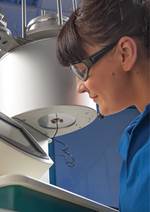


















 (2).jpg;maxWidth=300;quality=90)


